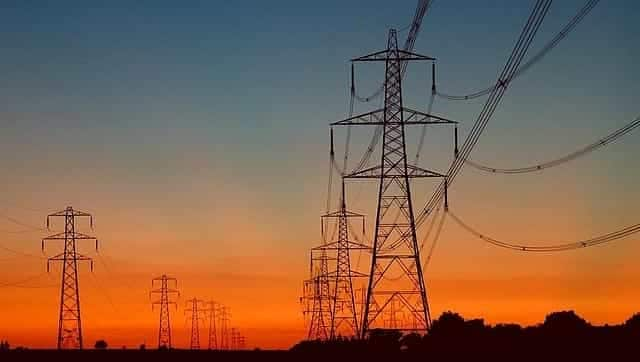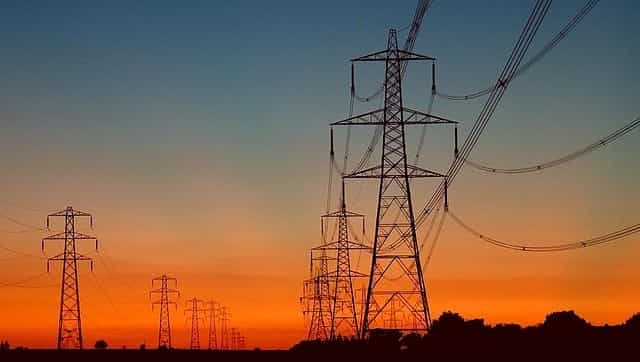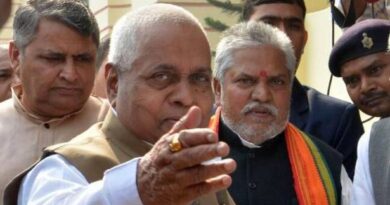Union Cupboard offers nod to BharatNet, distribution scheme for energy discoms; a quick look
The full expense for BharatNet will likely be Rs 29,430 crore to cowl round 3,60,000 villages in 16 states, which incorporates Rs 19,041 crore to be spent by the federal government for the viability hole funding,

Energy line. Picture courtesy Tony Boon/Wikimedia Commons
Two days after Nirmala Sitharaman at a press convention introduced a slew of reduction measures for COVID-19 affected sectors, the Union Cupboard on Wednesday authorised the Rs 6.29-lakh crore reduction bundle, Union minister Prakash Javadekar introduced.
affected sectors, the Union Cupboard on Wednesday authorised the Rs 6.29-lakh crore reduction bundle, Union minister Prakash Javadekar introduced.
Here is a take a look at a number of the proposals given assent to by the Cupboard Committee on Financial Affairs (CCEA) and what it means:
Rs 19,041 cr viability hole funding for BharatNet in 16 states
The Cupboard authorised public personal partnership mode for the rollout of BharatNet challenge for broadband companies in villages in 16 states with viability hole funding of Rs 19,041 crore, telecom minister Ravi Shankar Prasad mentioned.
How a lot it prices: The full expense will likely be Rs 29,430 crore to cowl round 3,60,000 villages in 16 states, which incorporates Rs 19,041 crore to be spent by the federal government for the viability hole funding, Prasad mentioned.
Why it issues: The choice to contain personal gamers was taken after Prime Minister Narendra Modi introduced on 15 August, 2020, that round 6 lakh villages within the nation will likely be related with broadband in 1,000 days, Prasad mentioned. He mentioned until date 1.56 lakh out of the two.5 lakh village panchayats have been related with broadband.
CCEA approves Rs 3.03-lakh crore scheme for energy discoms
The CCEA additionally authorised a five-year-long reform-based result-linked energy distribution scheme value Rs 3.03 lakh crore. Briefing after the CCEA meet, Energy and New & Renewable Power Minister RK Singh mentioned, “We have now carried out lots for energy distribution reforms. It must be strengthened. At the moment, the Cupboard has authorised the brand new scheme value Rs 3.03 lakh crore, together with Rs 97,000 crore central outlay.”
What this implies: The Central schemes Built-in Energy Improvement Scheme, Deen Dayal Upadhyaya Gram Jyoti Yojana, and Pradhan Mantri Sahaj Bijli Har Ghar Yojana (Saubhagya) will likely be merged.
How a lot it’ll price: Complete allocation will likely be Rs 3,03,058 crore, together with Central Authorities share of Rs 97,631 crore.
What it’ll do: The Reform-Based mostly Outcome-Linked Energy Distribution Scheme was introduced within the Price range earlier this yr. The funds could be given to energy distribution firms (discoms) to strengthen their system. The revamped reforms-based result-linked energy distribution scheme will present monetary help to discoms for infrastructure creation, up-gradation of system, capability constructing and course of enchancment. It gives state-specific intervention rather than “one dimension suits all”.
How states can avail this scheme: States should pre-qualify standards like publication of audited monetary experiences, upfront liquidation of state authorities’s dues/subsidy to discoms and non-creation of extra regulatory belongings.
What the scheme envisages:
- 25 crore sensible meters
- 10,000 feeders
- 4 lakh km of low-tension overhead strains deliberate beneath the continuing works beneath Central Authorities schemes.
What else was in Sitharaman’s reduction bundle?
As a part of the bundle to assist the COVID-19 pandemic-hit economic system, Sitharaman introduced Rs 1.5 lakh crore of extra credit score for small and medium companies, extra funds for the healthcare sector, loans to tourism companies and guides, and waiver of visa charge for overseas vacationers.
pandemic-hit economic system, Sitharaman introduced Rs 1.5 lakh crore of extra credit score for small and medium companies, extra funds for the healthcare sector, loans to tourism companies and guides, and waiver of visa charge for overseas vacationers.
How a lot it prices: Along with beforehand introduced Rs 93,869-crore spending on offering free foodgrains to the poor until November and extra Rs 14,775 crore fertiliser subsidy, the stimulus bundle, which is generally made up of presidency assure to banks and microfinance establishments for loans they lengthen to COVID-19 -hit sectors, totalled as much as Rs 6.29 lakh crore.
-hit sectors, totalled as much as Rs 6.29 lakh crore.
The place the cash will go: The finance minister supplied Rs 23,220 crore of extra funding to arrange kids and paediatric care at hospitals to arrange healthcare infrastructure to take care of any emergency arising attributable to COVID-19 wave hitting kids.
wave hitting kids.
Additional, to incentivise job creation, the federal government dedicated to paying the employer and worker’s share to provident fund (PF) for all new recruitments carried out until March 2022. Beforehand, the federal government paid Rs 902 crore for 21.42 lakh beneficiaries of 79,577 institutions.
Help for tourism sector
With the tourism sector being hit onerous by the pandemic, the minister had introduced monetary assist to over 11,000 registered vacationers, guides, journey and tourism stakeholders, along with free one-month vacationer visa to the primary 5 lakh vacationers.
Different bulletins
Different bulletins included an extension of tenure of a production-linked incentive (PLI) scheme for large-scale electronics manufacturing by a yr and Rs 88,000 crore of insurance coverage cowl for items exporters.
Two bulletins made by Sitharaman relating to the extra subsidy of Rs 14,775 crore for DAP & PK fertilisers, and extension of Pradhan Mantri Garib Kalyan Anna Yojana (PMGKAY) free meals grains from Might to November 2021, had been beforehand authorised by the Cupboard.
With inputs from PTI



